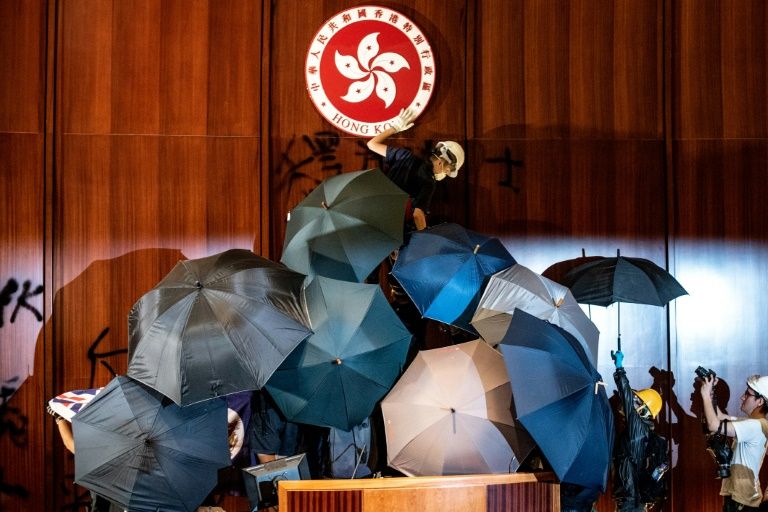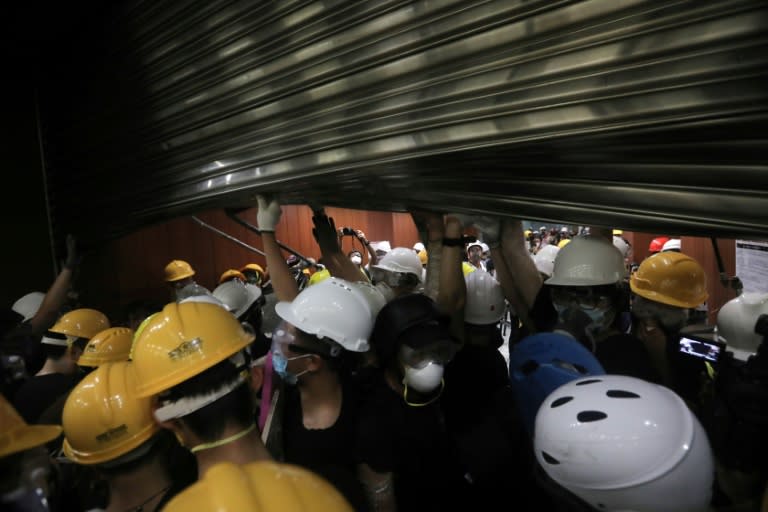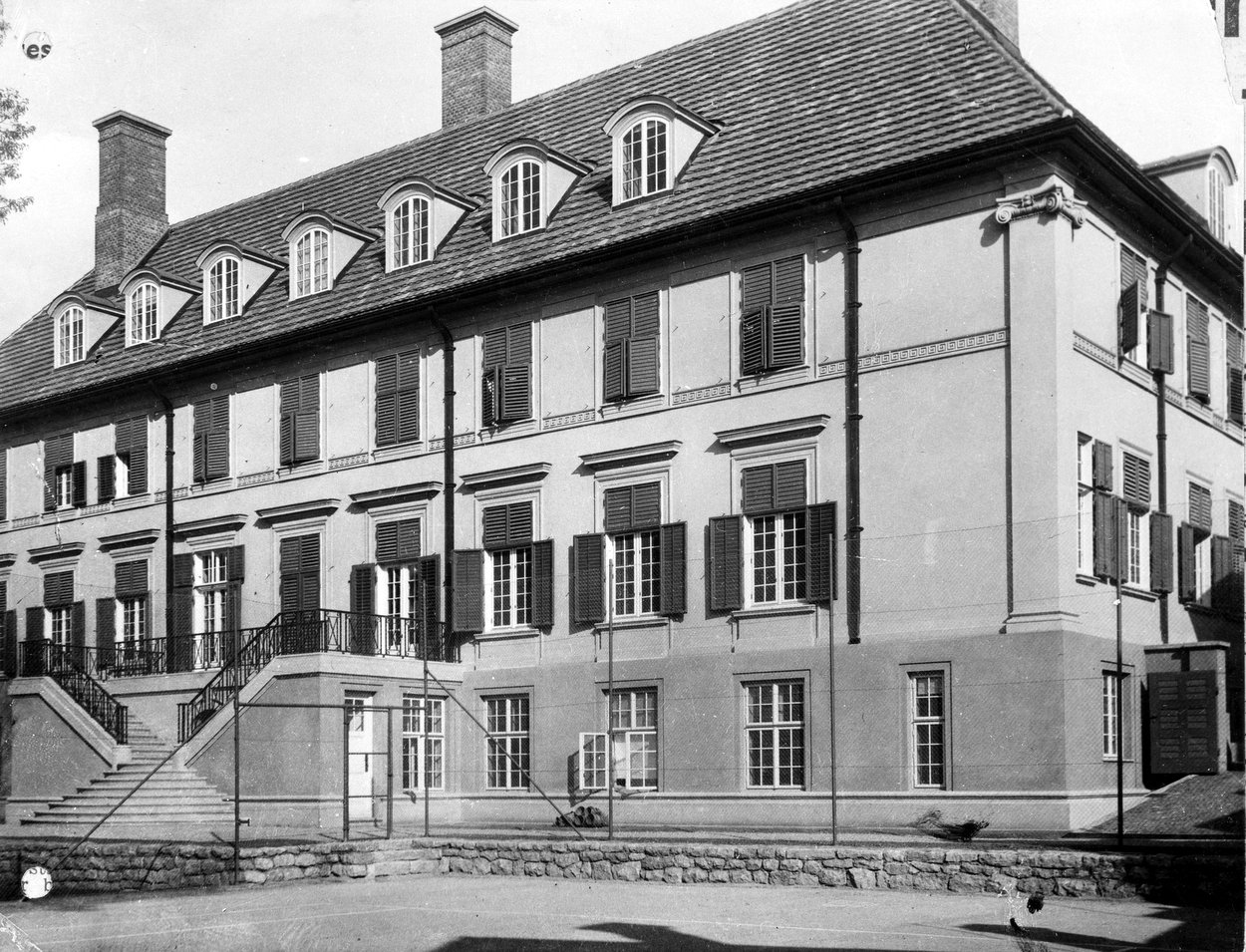Throughout the last three weeks of unprecedented anti-government demonstrations, the largely young students at the frontlines of the protests have displayed a flair for innovation in their battle with the authorities.
But Monday’s storming and vandalising of the legislature was their most brazen operation to date — an hours-long siege and eventual breach of a heavily fortified building using whatever tools came to hand.
The protests have been leaderless — unlike previous mass demonstrations where key figures have been jailed in recent years for leading or encouraging civil disobedience.
Many of the current generation of largely young protesters proudly repeat the phrase “be like water”, a philosophy of adaptability and unpredictability espoused by martial arts master and local legend Bruce Lee.
– Hand signals –
In an inventive move that proved key in supporting those on the front lines, protesters created a string of hand signals to communicate equipment requests
A guide to the signals was shared among social media — a triangle an appeal for more helmets. Other gestures alert the crowds for cling film, umbrellas, scissors, even asthma medication.
The equipment is then ferried to the front by long, snaking lines of protesters.
On Wednesday police announced that a 35-year-old man surnamed Lau had been arrested during the early hours of Monday morning after they found supplies in his van.
“Officers seized a batch of scissors, cutters, hexagon keys, helmets, masks, gloves and industrial grade baking soda from a parked van,” the police said.
– ‘We have to support each other’ –
The South China Morning Post reported that the decision to storm the parliament was taken after some 200 hardcore protesters put various options to a vote earlier on Monday, as the city was marking the anniversary of its handover to China.
Tosi Kwan, a 29-year-old teacher, was among those helping to ferry equipment to the front before the parliament was breached.
“I’m not too sure about the ultimate goal tonight,” he told AFP. “Maybe those on the front lines have discussed this, I don’t know. But as resistors, we have to support each other, and those on the front lines.”
While Kwan was not taking part in the break-in, he said he understood those who were because years of peaceful protests had failed to achieve political reform.
“Such resistance is necessary. It’s been clear: two million people marching was useless,” he said, referencing a record-breaking rally on 16 June.
The first successful breach of the building’s heavily reinforced windows came after protesters filled a street vendor’s trolley with heavy debris and then used it as a battering ram.
It looked like something out of a medieval siege. Inside the building stood rows and rows of riot police with shields, pepper spray and gas masks.
On the other side protesters slammed the trolley against the glass for some two hours as others protected them from police pepper spray with a shield wall of umbrellas.
Some of the protesters had strapped makeshift armour to their bodies, comprised of thick magazines or cork padding.
One of the most persistent assailants wielded an eye-catching orange shield that was made out of one half of a plastic suitcase. Others assembled long paint rollers to cover CCTV cameras on the ceiling.
– ‘Don’t destroy’ –
But it was steel poles, taken from nearby construction sites and unscrewed from street fencing, that proved the most reliable at defeating the toughened glass.
As the sun set, protesters discovered they could make much better progress against the glass by attacking its edges, creating a hole that could quickly be widened.
The riot police then retreated behind steel shutters that placed the building on complete lockdown. But they were little match for the protesters who again used the polls to prise the shutters up high enough to place metal barricades underneath and allow people to flood through.
At that point police abandoned the parliament to the protesters who swarmed the building, spraying the walls with graffiti, tearing down portraits of city leaders and hanging a colonial-era flag in the debating chamber.
But even the storming showed careful levels of coordination with notes left by protesters telling their fellow assailants to leave books and display cabinets with expensive trinkets unharmed.
“Preserve cultural objects”, “Don’t destroy”, read two notes next to a display cabinet.
Another sign was stuck to a fridge containing drinks.
“We are not thieves,” it read. “We won’t take without asking.”
https://news.yahoo.com/hand-signals-shields-hong-kongs-parliament-stormed-073712901.html;_ylt=AwrC1jGahBxdAiAAcQfQtDMD;_ylu=X3oDMTEyODAwZXF2BGNvbG8DYmYxBHBvcwMxBHZ0aWQDQjc1MDZfMQRzZWMDc3I-















